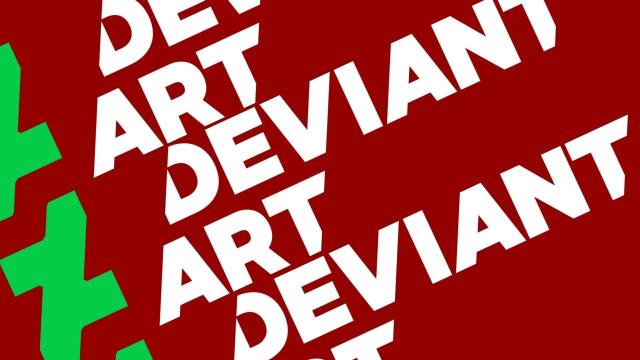In December, I reported that NFT theft is still plaguing DeviantArt users, despite the existence of a blockchain-based fraud detection tool. It was a moment to check in on DeviantArt and see how it was tackling NFTs after it announced this fraud tool in September.
While some users welcome the tool, others were considering leaving DeviantArt due to the sheer volume of art theft. DeviantArt itself called on creator platforms to help fight art theft.
NFT theft is essentially when NFTs are created from work that isn’t owned by the creator and art is stolen from artists, models or businesses, minted into NFTs. It’s a way that dishonest people can make a quick buck, which is why DeviantArt introduced the fraud detection tool (which I’ll get to in a moment).
In February 2021, an artist by the name of Qin Han (or “Qinni” on DeviantArt) passed away. As a high-profile artist in the DeviantArt community, this shock hit everyone, including DeviantArt’s management team.
[Fragile] ☔️ pic.twitter.com/Mi7D5TIX82
— Qinni 【天天就是天天】 (@QinniArt) February 5, 2020
After her passing, someone minted NFTs of her work from DeviantArt, attempting to profit from her effort – it’s this event that DeviantArt says pushed them to create their NFT fraud detection tool.
“It really highlighted the risk of what was happening with NFTs,” Liat Karpel Gurwicz, the chief marketing officer of DeviantArt, told Gizmodo Australia.
“That was the point in time that we decided to try and open up the service to the blockchain.”
How it works is like this. Whenever a new piece of art is uploaded to a blockchain art website, it’s scanned by DeviantArt’s tool to see if it’s similar to any art that already exists on that website. If it does, the owner (on DeviantArt) is alerted to the NFT minting, and can then submit a takedown notice to the specific website hosting the NFT.
It’s an expanded form of an already intricate tool that exists on the DeviantArt platform. Art theft isn’t a new problem, after all. The same scan occurs on DeviantArt, checking for similarities between newly published work and already published work, but because it’s all internal, DeviantArt is able to take it a step further.
When reporting an infringement, DeviantArt’s site-specific tool gathers up the necessary evidence and data, which is then submitted to a DeviantArt employee who checks over the claim. This is, of course, aided by the fact that DeviantArt has on-site verification for artists, which doesn’t yet have integration with Web3 platforms.
It’s for this reason that DeviantArt says it’s approaching Web3, the metaverse and the NFT craze with caution, with the aim of putting its creators first. DeviantArt’s future in Web3 will be achieved delicately. While DeviantArt sees value in the NFT and Web3 space, there are things that need to happen before it’ll be satisfied with the emerging technology.
“We are obviously in the infancy mode of the NFTs,” says Moti Levy, DeviantArt’s chief operations officer.
“Creating the future without putting in the right checks and balances of protecting the creator community which is the foundation of the whole thing is going to fail. Miserably.
“It makes sense for us to be involved but we’ve decided to start with the protection, with the art theft stuff because we’ve seen the needs of the creators.”
There are no promises on what DeviantArt will do with other Web3 things in the future, however, the fraud detection tool seems to be the backbone of what the art platform will do in the space.
“Because of the marketplaces, because a lot of them are still relatively young, they don’t really know how to deal with this issue yet,” added Gurwicz.
“It can take them a really long time to get back to the creators. So, imagine that you file a DMCA and then a marketplace takes three weeks before they remove that infringing piece. That’s crazy. Three weeks is an eternity in Web3.
“The risk of that piece being sold in the interim is really, really high, so ideally we would automate that.”
The focus of DeviantArt in the NFT space for the foreseeable future will be on expanding the fraud detection tool in two ways.
The first is through expanding the aforementioned reporting system, which will largely come from work on the blockchain itself. While it’s incredibly easy to report stolen content on the DeviantArt platform, it’s more difficult on NFT marketplaces, where the artist has to file the DMCA (a violation against the U.S. Digital Millennium Copyright Act) and report directly to the marketplace, which are often unresponsive.
The second is through bringing verification to blockchain marketplaces – being able to whitelist artists as legitimate is an important way of cutting down on theft, if you can prove that the profile selling the art is, in fact, the legitimate owner.
“We are also willing to open up the service to other Web2 platforms that want to offer protection to their user base as well,” Gurwicz continued.
“The North Star for us is always going to be what our community needs and wants, so we’re aligned with that.”
For now, the future of NFTs and DeviantArt is cautious, with artists still warming up to the threat.
Hey, artists who get their work stolen and minted in to NTFS on a certain @opensea website, here’s a short guide and template for reporting it:
— Lazerlord 🐲🍉 (@Lazerlord10) December 7, 2021
